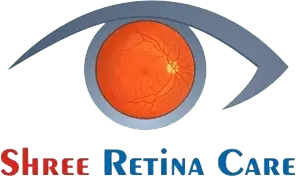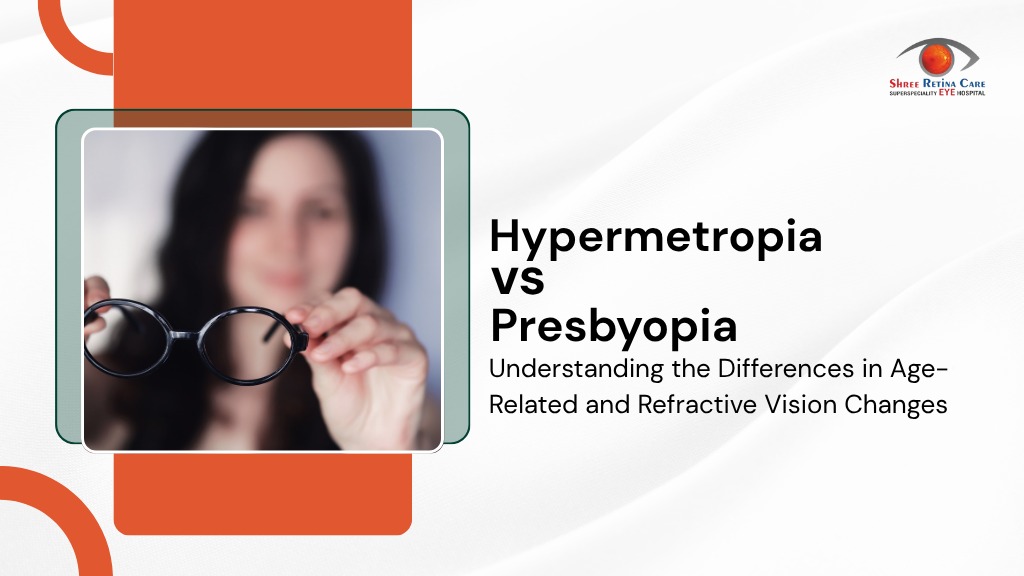Hypermetropia vs Presbyopia: What Your Eyes Are Trying To Tell You
Lately, if things up close have started looking blurry, you’ve maybe heard someone say it could be hypermetropia… or maybe presbyopia. And it’s confusing, honestly. Both sound alike and mess with your near vision.
But they aren’t the same thing. Not really.
Most people mix them up, probably because the signs feel kind of similar. If your glasses or prescription papers have these words, and you’re not sure what they mean, you’re not alone.
So here’s just a simple way to tell the two apart. No eye-doctor talk. Just the basics.
What Is Hypermetropia?
Ever looked at something that is far and it’s crystal clear, but when you glance at your phone or try to read a book, it’s all fuzzy? That’s farsightedness. People also call it hypermetropia.
It usually happens when your eyeball is a little shorter than normal. Or the front part of your eye is just a bit too flat. Because of that, the light entering your eye doesn’t reach at right time — it goes a little too far back. And that’s what makes close-up stuff look blurry.
Some people don’t notice it right away. But after reading for a bit, the eyes feel tired. Sometimes, there’s a small headache too. Kids usually won’t say anything — they just lose interest in things like colouring or reading.
It can happen to anyone. Often it runs in the family. But it’s nothing serious. A simple pair of glasses or soft contact lenses usually helps, and everything near you looks clear again.
What Is Presbyopia?
Ever find yourself holding your phone farther and farther away just to read a message? Or squinting at a restaurant menu even though you’ve never needed glasses before? That might be presbyopia.
It’s something that usually starts at age 40. As we get older, the lens inside our eye loses its efficiency. The small muscles that help it focus up close slowly lose their strength. So, switching from looking at something far away to something nearby becomes harder.
Common Signs:
– You keep moving the reading stuff further away to make it clear
– Small print starts looking blurry
– Reading in dim light feels almost impossible
– Your eyes get tired quickly when you read
Who Gets It?
Almost everyone does, eventually. Even if your vision was perfect at a younger age, presbyopia is just one of those things that occur with age. It’s completely normal. Knowing about it at the right time just helps you figure out what to do next.
Hypermetropia vs Presbyopia : The Key Differences
These two conditions often get mixed up because they both make near vision harder. But here’s how they’re different:
Hope you will get the clarity of the difference between hypermetropia and presbyopia.
| Feature | Hypermetropia | Presbyopia |
| Type | Refractive error | Age-related lens stiffness |
| Cause | Eyeball shape or cornea issue | Loss of flexibility in the lens |
| Age of Onset | Can be present from childhood | Typically starts after age 40 |
| Symptoms | Blurry near vision, eye strain | Needing reading glasses, arm-stretch reading |
| Treatment | Convex lenses, glasses, and surgery | Reading or progressive glasses |
| Can They Coexist? | Yes | Yes |
Can You Have Both At The Same Time?
Yeah, you actually can. Happens more often than people think.
Like, someone might already be slightly farsighted since they were young, but never really noticed. Then, after a certain age—usually 40 or so—the eyes just stop focusing up close like they used to. That’s presbyopia showing up.
Now imagine both together. Reading? Straining. Phone screen? Arms fully stretched. Not fun.
The upside? Glasses exist that fix both. They’ve got different zones in the lens, so you can look far, near, whatever—without swapping glasses every time you change what you’re looking at. Super useful once your eyes start acting up on both fronts.
How Are They Treated?
Thankfully, both conditions are easily treatable.
For hypermetropia:
- Prescription Glasses: Lenses that help light focus correctly on the retina
- Contact Lenses: Ideal for those who don’t want to wear glasses all day
- Laser Eye Surgery (e.g., LASIK): In some cases, reshaping the cornea can reduce or eliminate farsightedness
For presbyopia:
- Reading Glasses: The simplest fix for people who don’t have other vision issues
- Progressive or Bifocal Lenses: These work for people with both distance and near vision issues
- Multifocal Contact Lenses: Provide vision correction at multiple distances
- Surgical Options: Like lens replacement surgery for more severe or complex cases
Your eye specialist will recommend a solution based on your lifestyle, age, vision needs, and preferences.
When Should You See An Eye Doctor?
Honestly, both are manageable. Not scary stuff.
If it’s farsightedness:
– Glasses are the go-to. They bend light right so nearby stuff looks clear.
– Not a fan of glasses? Contacts work too. Easy to wear, and no frames in the way.
– Some folks even go for laser surgery. It changes the shape of the eye’s front so light hits better. Not for everyone, but it works well for many.
Now, for presbyopia:
– Reading glasses do the trick. Pop them on when reading; that’s it.
– Or, you could use progressive lenses—those let you see near and far without switching glasses.
– Contacts also come in multifocal style. Great if you want to skip glasses altogether.
– In some cases, doctors suggest surgery. Like replacing the lens in your eye if it’s really bothering you.
In the end, it’s best to talk to your eye doctor. They’ll suggest what fits your life best—your age, habits, how you use your eyes daily… all of that.
Tips To Manage Daily Life With Presbyopia Or Hypermetropia
- Glasses — just wear them if things are blurry. Pushing through won’t help your eyes.
- Keep the lights on, like really. Low light makes everything harder.
- If it’s been months (or years), maybe get your eyes checked. Your specs might be outdated.
- Give your eyes small breaks. Like, just look at something far every now and then.
- If you keep juggling glasses, ask your doc if there’s one that can do both jobs. Easier life.
Conclusion
It starts slow. You hold the book a bit farther. Squint at your phone. Think the light’s too low. But it’s not always the light. Eyes change. It’s normal.
Wearing glasses helps. Some avoid it, hoping it’ll settle. It won’t. Straining doesn’t fix it—it just tires you out. Glasses take off that load.
Try reading with a lamp nearby. Not those dim corners. Bright light helps more than most people expect.
Also, if it’s been more than a year, maybe your glasses aren’t right anymore. Eyes shift. Prescriptions do too. Outdated lenses? That’s more pressure on your eyes than needed.
Now and then, just pause. Look away from your screen or book. Maybe glance out a window for half a minute. Your eyes relax when they stop focusing close for a while.
And if you’re switching glasses all day—for far, for close, for in-between—it’s worth asking about one solution. Multifocal lenses help a lot. No more swapping pairs every hour.

